ABA News
Friends on the Other side: A catalogue deep-dive with Suzanna Beaupré
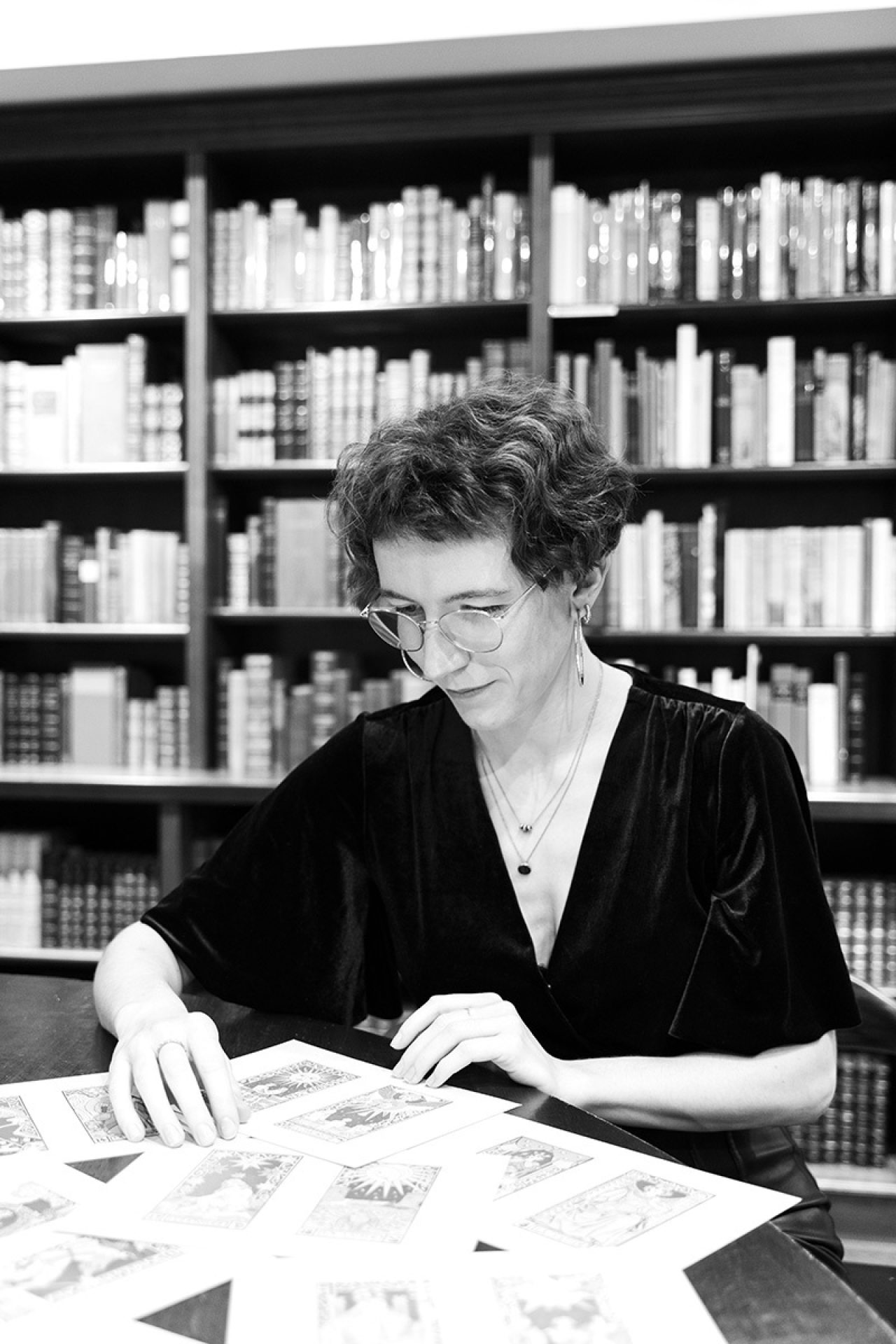
This autumn sees the appearance of Peter Harrington's new occult-themed catalogue Friends on the Other Side, curated by Suzanna Beaupré and Sammy Jay. We asked Suzanna to tell us a bit more about this bewitching collection of items.
Your new catalogue, ‘Friends on the other side’ spans the weird, the miraculous, and the macabre. Which items stand out for you as most likely to give collectors the shivers?
Ah! So many! And all for different reasons. An Adventure, the anonymously published account of the famous Versailles time slip (in which two English University lecturers claimed to have fallen into the past on a visit to the Petit Trianon), will always do that for me: the first time I discovered the story I was working late and therefore alone in the shop and got drawn into a rabbit hole - all evening the story played on my mind. I just couldn’t shake the characters, and especially the sense of depression and unease that came over Moberly and Jourdain. I still find it enticing and unnerving.
We have some wonderful ghost stories that are sure to put a chill down a spine: Algernon Blackwood, Arthur Machen, Margaret Baillie-Saunders. But for me Eleanor Scott’s collection Randall’s Round is the place for to go for a chilling tale: with ritualistic folk horror and haunted mansions it ticks all the boxes.
Visually we have two items that raise immediate goose bumps, for different reasons: the reference photos for Malcolm Leigh’s x-rated, “witchploitation” film Legend of the Witches are evocative (and sensual), while on the other side of the spectrum images of the art by a Crowley devotee named Rodney were being shared round the shop to unnerve each other all through the catalogue production process.
To be serious for a moment, I would also add in Giovanni Francesco Pico della Mirandola’s 1524 Libro detto Strega, o delle illusioni del Demonio – it’s the first treatise on demonology to be printed in Italian and was rapidly written (in less than 10 days) as a justification for the ferocious witch-hunt that took place in Mirandola (near Ferrara) between 1522 and 1525. Dozens were put on trial and ten were burned to death on a pyre. While witches and ghosts can be fun, their history is often sadly one of state and church sanctioned murder.
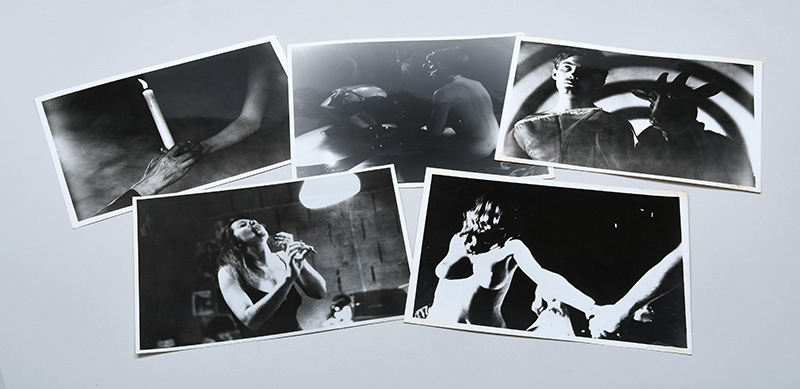
You’ve spent time with some astonishing and mysterious books over the course of cataloguing material for this catalogue. Are there any items that felt particularly tinged with magic to work with?
For this catalogue a lot of the items had an underlying something about them, be that a sentimentality or a lurking power. Some of my colleagues joked, for example, that I should probably stop being so flippant about Aleister Crowley’s drug habits while handling his books, especially those with his manuscript annotations. Sammy and I have also wondered if, come Halloween, we should line our windows with salt to avoid any recompense for having meddled in forces we don’t fully comprehend when putting this catalogue together.
There is one item though which definitely had a magical hold on me – the manuscript book of spells compiled by Shropshire physician John Clee. This small vellum notebook was full, literally, of charms, theology, fairy lore, astrological theory, and much more, and had clearly been put to practical use. Some of the suggestions (for example the advice that “A woman shall not conceive; if she drink every month of of the Urin of a mule” I probably won’t be following, but others, such as how to call upon the “fairies & hobgoblins that inhabit Championfields” with “sweet fumes & pleasant sounds”, I might be tempted to explore if the whole bookselling thing doesn’t work out.
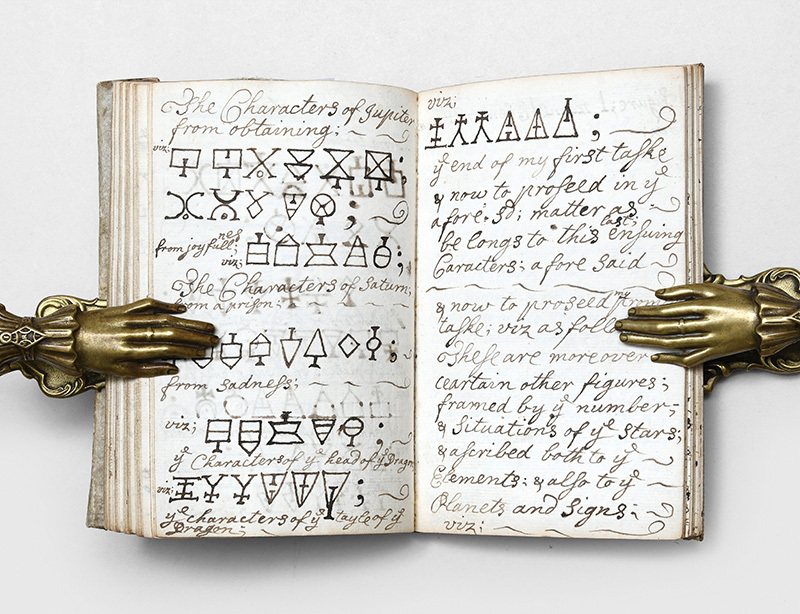
Have you discovered any characters or figures over the course of your research for this catalogue who have particularly possessed you?
One of the items in the catalogue I found most moving was a cabinet card photograph of the clairvoyant Elizabeth Harrison. The photo shows her as a young woman in her full professional raiment, and it conjures up the elaborate Victorian world of clairvoyance and mediumship in which I spent a lot of time when preparing the catalogue. It was taken in Liverpool sometime between 1870 and 1875, when she was clearly in her prime. I found her again in the historical record in 1917, when she was summoned to the Lincolnshire Magistrates court “for pretending to tell fortunes by means of cards and crystal globes”. Harrison was at that point a widow, supporting 5 children, and being accused of swindling two women desperate for news of their loved ones on the front in the war. The Victorian heyday of clairvoyance depicted in the photo was over, but the grief of the war was causing an outpouring of spiritual belief, a desire to cling to some possibility that you could contact deceased loved ones. It's an incredibly poignant moment in history, and Harrison’s story encapsulates it for me. When the judge asked her to justify herself, questioning if she really believed what she was telling her clients, she answered: “I am a spiritualist and I work by the spirits. That is my religion”.
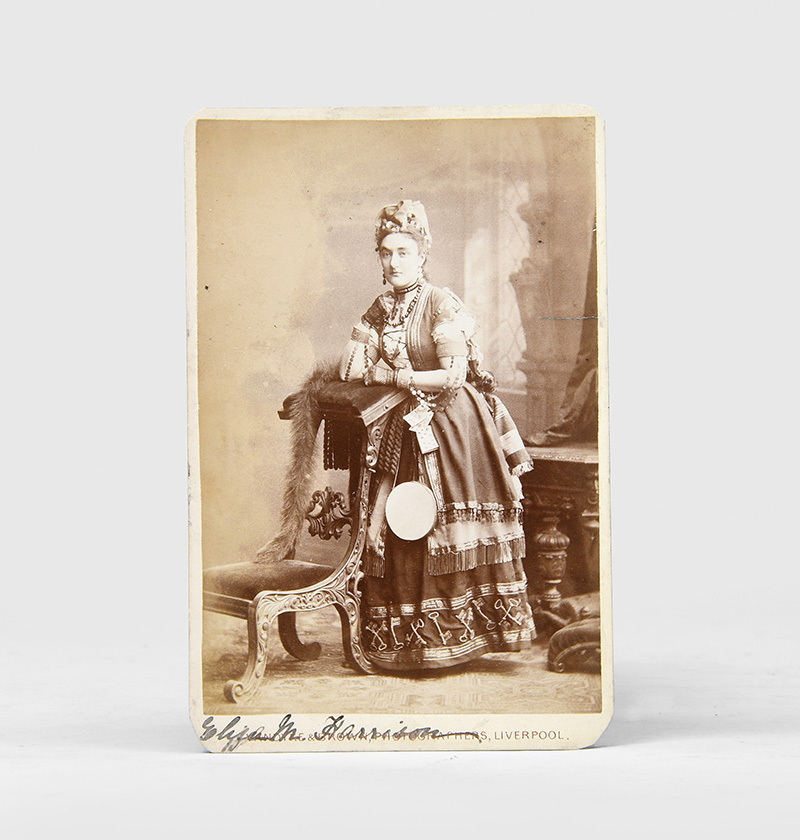
Many of the items are visually beautiful, artworks in themselves. Do you have any aesthetic favourites?
As you say this catalogue is particularly rich with visual material, so it’s a hard call. For me our cover item, Anton Prinner’s Le Livre des Morts des Anciens Egyptiens has to be a stand out. The weird and wild interpretations are right up my street, favourites being a particularly solid cat, a wheat field beard, and of course the procession on the cover. The work is often considered Prinner’s magnum opus and uses a printing technique he invented: ‘papyrogravure’, which uses a cardboard plate to print from instead of copper, and I think adds a lushness to the images. Prinner is best known, however, for his sculptures, and Picasso referred to him as “the small man who makes large statues”. Prinner and Picasso first met when Prinner moved to Paris in 1928, and Prinner became an important figure in the larger surrealist movement. This was around the time that Prinner, born Anna or Antonia and assigned female at birth, changed his name to Anton and requested that people address him with male pronouns.
There seems to have been an increased interest in collecting occult material in recent years. Why do you think this is, and how do you think it’s affecting the market as a whole?
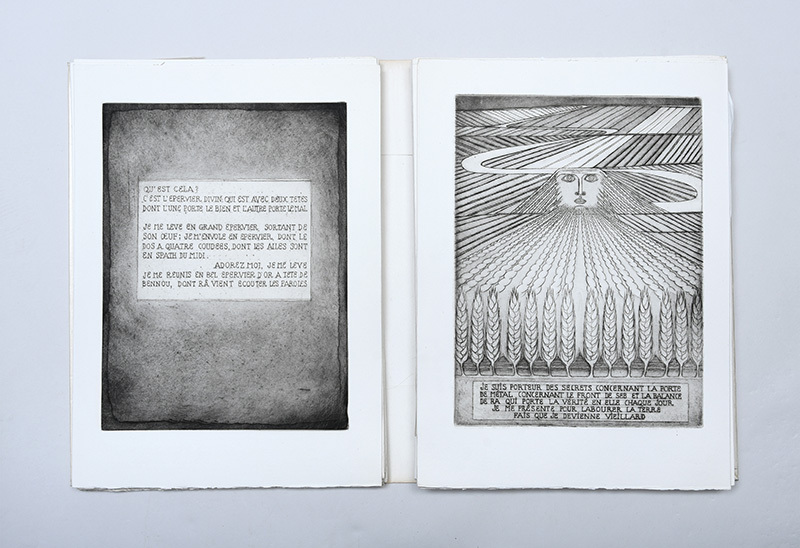
One of the trends we saw when gathering material was that people turned to the occult and the esoteric in turbulent times or for reassurances. I think we are seeing some of that now, as well as a desire to reenchant our world, and move away from purely rationalist methods of thinking. I think there has also been an academic shift away from a sort of whispered embarrassment at any involvement in the occult – people are acknowledging the huge influence that spiritualist or magical thinking had on authors and artists and even scientists, and it is opening up new areas of academic study. This is reflected in both our catalogue, with the inclusion of authors like T. S. Eliot, Shirley Jackson, and Rudyard Kipling, who you may not have expected to find, and in the wider way works are presented. I’m thinking for example about the recent Hilma Af Klint exhibition at the Tate Modern, which showed how the surrealist movement was embedded within a highly esoteric context. All of the occult activities represented in the catalogue have been in continual practice, and I think people are now realising they should be brought out of the shadows in order to enrich our historical understandings.
What kind of collectors do you hope these items will find a home with?
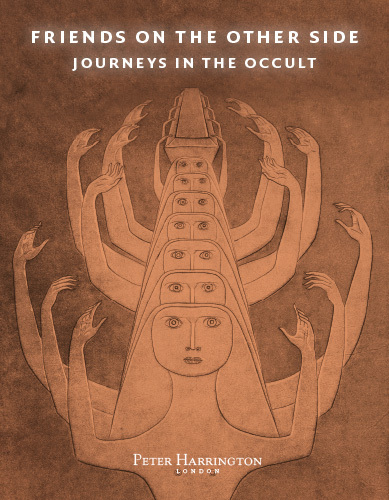
Anyone who loves them! There is a whole range of ways of collecting, be that buying from rare book dealers, roaming antique shops on the hunt for spirit photography, or picking up obscure trade cards from phone boxes. Whatever sparks excitement is the path to follow – and if people are excited by our catalogue that’s what I want. A lot of the items in this collection are ripe for further research – one of the joys and catches of rare book dealing is that you are only a temporary custodian of a book. As much as you may want to keep it and pore over every detail, that is really a joy reserved for the eventual owner. As such, I like to see unique items go somewhere where their historical research potential can be unlocked, be that privately or institutionally. But anyone who will treasure and care for these items is a welcome collector!
